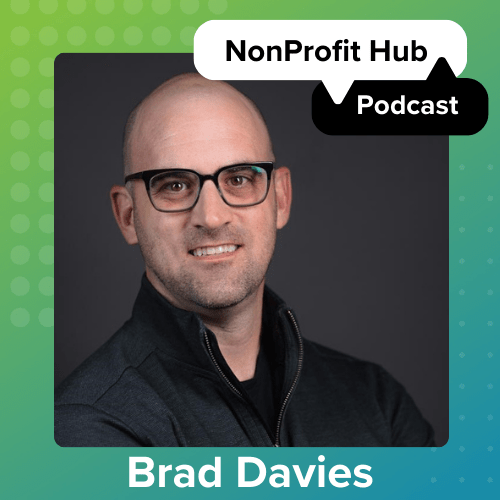Fundraising is quite the beast. It’s a sprawling, intricate process, and there are areas of it that nonprofits (especially new ones) tend to avoid to keep it simple. One of these areas is legacy giving.
Legacy giving, also called planned giving, is a type of donor-based fundraising that scares a lot of organizations, causing them to neglect it altogether. But it’s not that scary—at least, it doesn’t have to be.
This form of fundraising can be extremely impactful, helping you generate steady, predictable revenue streams of often unrestricted funding. It also creates many opportunities to deepen your relationships with donors, allowing them to work with you to create meaningful and long-lasting legacies.
Let’s go through the basics so you can decide if legacy giving might be the secret ingredient to your fundraising strategy. Here’s what we’ll cover:
- What is legacy giving?
- How to solicit legacy gifts
- How to cut the jargon
- Honoring gifts and growing your program
What is legacy giving?
A legacy gift is a donation made by an individual through their will or other formal estate planning designation.
Bequests (which designate a dollar amount or portion of the total estate to be donated) are by far the most common type of legacy gift. FreeWill’s guide to the types of planned gifts covers the other forms you may encounter as your program grows.
Legacy gifts are typically prepared by a financial planner and reflect the values and desires of the donor. Today’s online platforms have also made it easier for donors to create simple, planned gifts on their own.
But why do people want to leave legacy gifts? As the name suggests, most donors want to leave a legacy or memory of their life through their posthumous giving. Helping sustain the good work of a favorite charity for years can be a powerful motivator for some. Plus, planned gifts can bring various tax benefits, particularly reduced estate taxes for a donor’s heirs, making them a meaningful and practical choice for many donors.
In most cases, a legacy gift is made upon someone’s death, but not always. Legacy giving can take a number of forms, including recurring donations that begin while the donor is alive and continue after they’re deceased. Legacy gifts don’t have to be monetary, either. They can include material goods, property, mutual funds, stocks—anything valuable to the beneficiary.
How to solicit legacy gifts
Nonprofits solicit and secure legacy gifts through their legacy or planned giving programs. There are a few essential (and easy) steps you can take to get your program up and running:
1. Create a planned giving process.
How will you help donors create their legacy gifts? Playing an active role in the process can help increase completion.
For instance, many nonprofits offer their donors free will creation tools that simplify the process of creating a bequest (the simplest and most common type of planned gift). You can also provide detailed instructions and resources for donors once they’ve reached the point of wanting to set up a gift.
Either way, educating your team and understanding the process from start to finish will set you up for success.
2. Add legacy gifts to your website.
Most nonprofits don’t receive legacy gifts because their donors simply don’t know it’s an option.
Add a dedicated section about legacy giving to your website’s Ways to Give page, or go a step further by creating a separate landing page or microsite specifically about the different types of planned gifts, how they work, and their benefits. Here’s an example—the Humane Society of the Pike’s Peak Region created an entire microsite to promote planned gifts and other forms of non-cash giving.
3. Develop additional materials.
You’ll need more than just a web page to promote legacy gifts effectively. Letters, emails, phone scripts, mailers, and more will be helpful once your team discusses planned giving with interested donors.
And since this form of giving is often new to donors and more complex than straightforward cash gifts, you’ll need to provide user-centric educational materials. Remember to explain why these gifts are essential to your organization. Like any other form of fundraising, if a donor doesn’t see an organizational need, they may not donate. Explain to your donors the impact a legacy gift would have on your organization and the people you help.
4. Survey your donors.
The tricky part about legacy gifts is that a donor doesn’t necessarily need to notify you when they create one—your organization could already be in a donor’s will.
This is why it’s helpful to kick off your giving program with a quick email survey. Ask your donors a couple of questions:
- Are you interested in creating a legacy gift with our organization?
- If legacy giving is new to you, would you like to learn more?
- Have you already created a bequest or other form of legacy gift for our organization?
If you find that donors have already created legacy gifts, immediately thank them and begin actively nurturing the relationships to maintain engagement.
Conducting a survey also allows you to gauge general interest in planned giving among your donor base. Suppose donors respond that they’re interested or would like to learn more. In that case, you can flag them for outreach by sending them educational materials or directly reaching out to discuss the process.
5. Start promoting your giving program.
With all the essentials in place, you’re ready to begin earnestly promoting legacy gifts.
Lightly mention it across your various appeals and newsletters and in conversations with major donors. For donors who have already expressed interest, add them to an email stream or other outreach cadence that dives into greater detail about planned giving. Remember to have a concrete plan to guide interested donors toward a completed planned gift once they’re ready to start.
It’s also important to remember that donors will only leave a significant gift if they have a strong personal connection to the cause. Make sure you know your audience. Like with significant donations, legacy giving requires nurturing relationships with donors.
For instance, detailed discussions of planned giving should only go to engaged, active donors with whom the topic has already been broached. Asking a one-time donor or volunteer to leave a legacy gift upon their passing isn’t an effective use of your time (and can come off as tactless).
6. Keep track of gifts over time.
Once you begin securing legacy gifts, keep track of them. This will bring a few important benefits:
- The ability to monitor the performance of your strategies and make improvements over time
- More insights into the types of donors who choose to give legacy gifts will help you more easily identify future prospects
- The ability to follow up with and actively steward your relationships with legacy donors
Track legacy giving data in your database or through a dedicated planned giving tool.
How to cut the jargon
A major barrier to legacy giving is the financial jargon that goes along with it. Bequest? Residuary? Annuities? What?
These terms are essential for donors to know. However, it’s not your job to explain the fine financial details. Your team must understand the different types of planned gifts and their benefits. But, donors’ financial planners will best handle the nitty-gritty of exactly how they work (especially more complex annuities and trusts) and their tax implications.
Instead, use concise, emphatic language to explain the benefits of legacy gifts for both donors and your organization. You don’t want to scare them off before they understand your needs.
Keep these key benefits front of mind as you discuss planned giving:
- Benefits for donors
- Legacy-building by sustaining a cause they love
- Freedom to choose how the organization will use the gift
- Tax breaks (discuss with professionals as needed)
- Benefits for nonprofits
- Reliable, predictable revenue
- Often unrestricted funds (although donors can restrict them)
- Builds a more engaged community of supporters
You can have more productive conversations with donors by emphasizing these benefits and the long-term good that legacy gifts can do for your mission.
Honoring legacy gifts and growing your program
If a donor grants your organization a legacy gift, it’s crucial to express gratitude. Honor their legacy with a dedication, a plaque, or a public thank you. If the donor had any specific wishes for their contribution, such as funding a particular program, abide by those requests. It’s also a good idea to keep staff and volunteers informed of the person’s impact on your organization and cause.
Over the long run, it’s important to continue stewarding your relationships with legacy donors. Keep them engaged with special events and personal messages. This will encourage further giving (making a legacy gift has been shown to increase future annual gifts) and ensure that you’re kept in the loop if a donor chooses to make changes to their estate plans.
Many nonprofits create legacy societies, special memberships just for legacy donors, to centralize their stewardship efforts. They can be as casual or formal as you want, whatever is most aligned with your organization’s culture—just be sure to anchor your outreach and events in gratitude.
Updated Sept. 28, 2023 | Originally published in 2017






